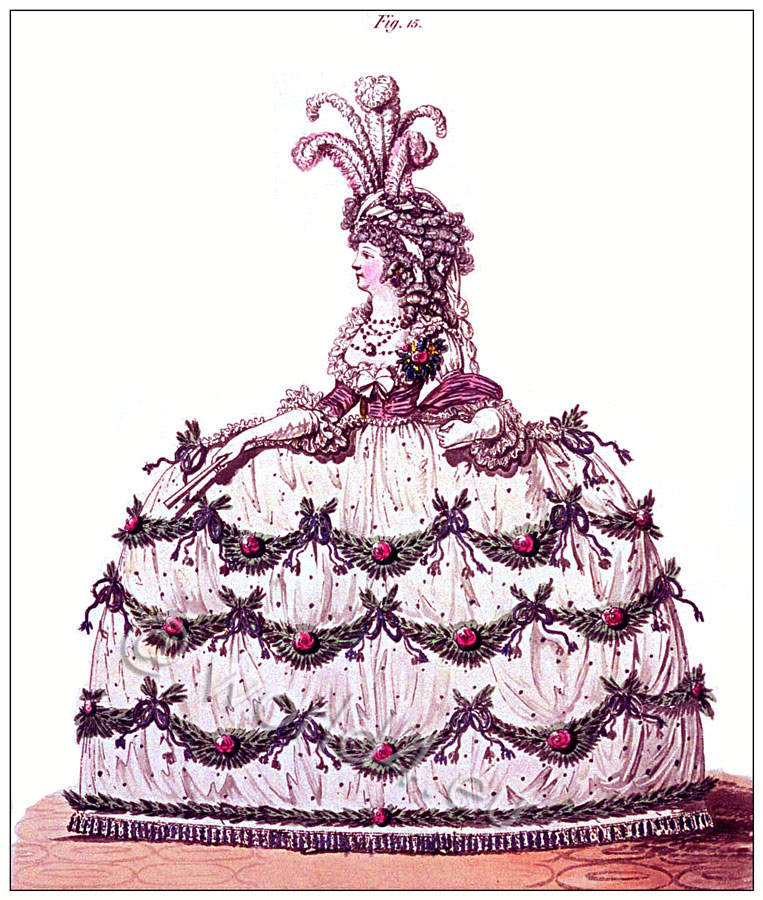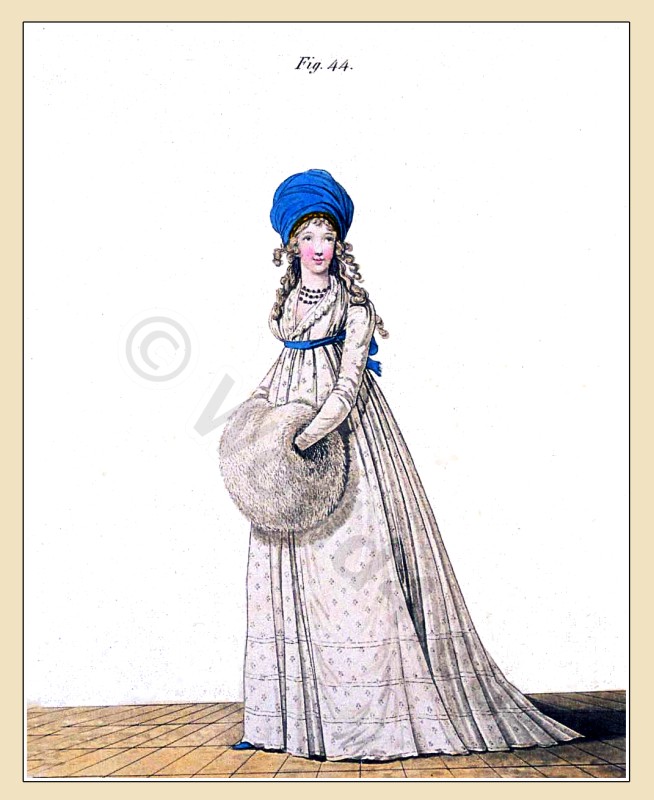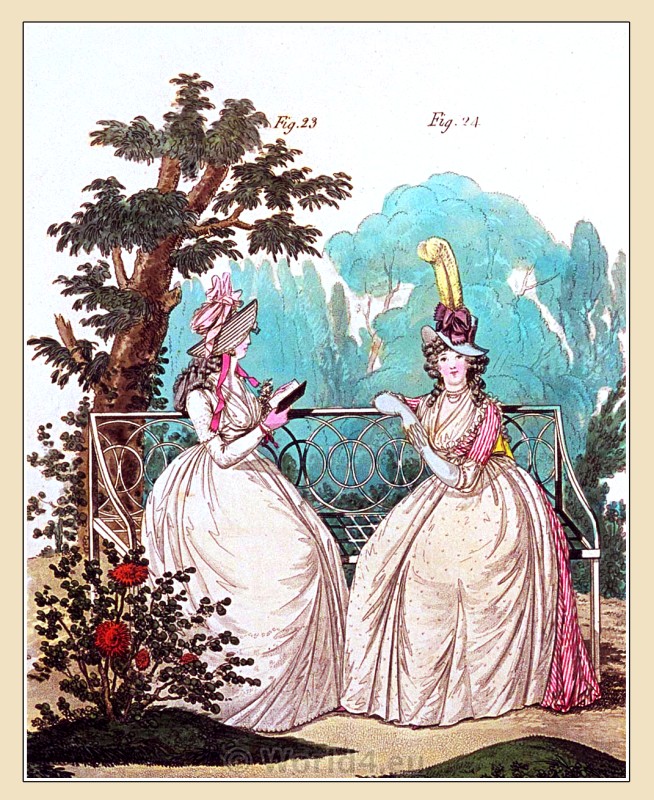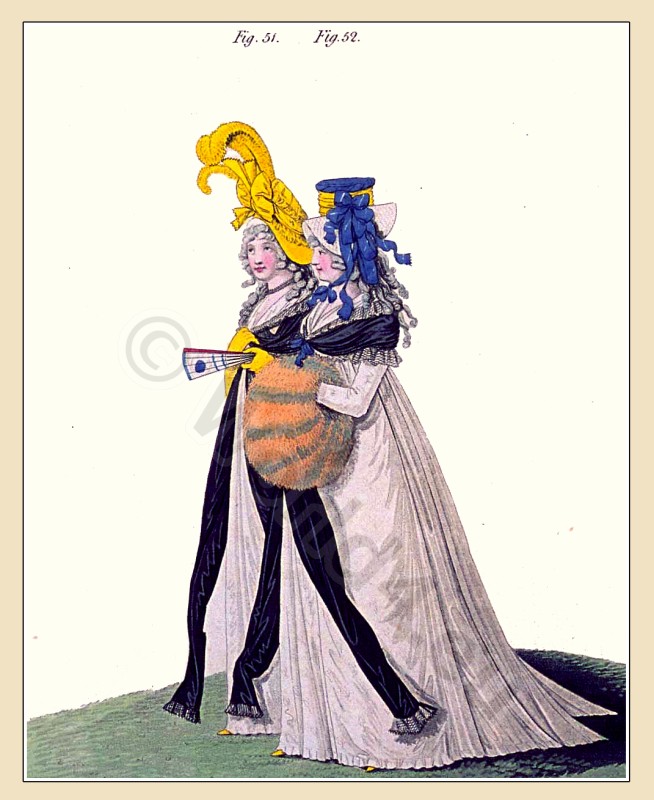Heideloff`s Gallery of Fashion. Evening Dresses. January 1795.
White satin petticoat trimmed with fur.
FIG. XL.
The hair dressed in easy curls, combed straight upon the forehead, and the hind hair in ringlets. Turban-cap à la Polonoise of white satin, trimmed with two fur bandeaux, and tied behind with a purple satin riband. Five white ostrich feathers, two of which edged with purple, placed in the front. White satin petticoat trimmed with fur. Robe of purple colouredsatin, embroidered in gold, with long sleeves, and short full sleeves of spotted crape. Tiffany handkerchief. Black silk and gold twisted cord round the waist, tied on the right side in a bow, the ends trimmed with tassels. Isabella bear skin tippet. Two strings of beads, round the neck. Gold car-rings. Purple satin-shoes,
FIG. XLI.
The hair frizzed and thrown into large curls; Chignon turned up plain, and the ends returned in ringlets, Cap of coquelicot satin, trimmed with sable. One white, edged with coquelicot, and two coquelicot coloured ostrich feathers placed in the front. White satin petticoat, trimmed with a white satin riband plaited. Polonoise of coquelicot coloured satin with short sleeves, trimmed with sable, and long sleeves of white satin. Prussian tucker trimmed with lace. Large muslin handkerchief. Sash of white satin riband. Pearl ear-rings. Two strings of beads round the neck. Coquelicot coloured shoes. Barbary goat skin muff.
FlG. XLII.
The hair dressed in small curls, combed straight upon the forehead, and the hind hair in ringlets. Chiffonet of white satin, spotted with chenilles, crossed in two parts with black silk net, and the end trimmed with black lace. Two white ostrich feathers placed on the right side, and two diamond pins in the front. Petticoat of fine muslin embroidered in gold. Polonaise of black and yellow figured silk velvet; short sleeves, the whole trimmed with a broad stripe of white satin, and a broad black lace. Handkerchief within the belt. Diamond necklace and ear-rings, Isabella bear skin tippet and muff.
Discover more from World4 Costume Culture History
Subscribe to get the latest posts sent to your email.







